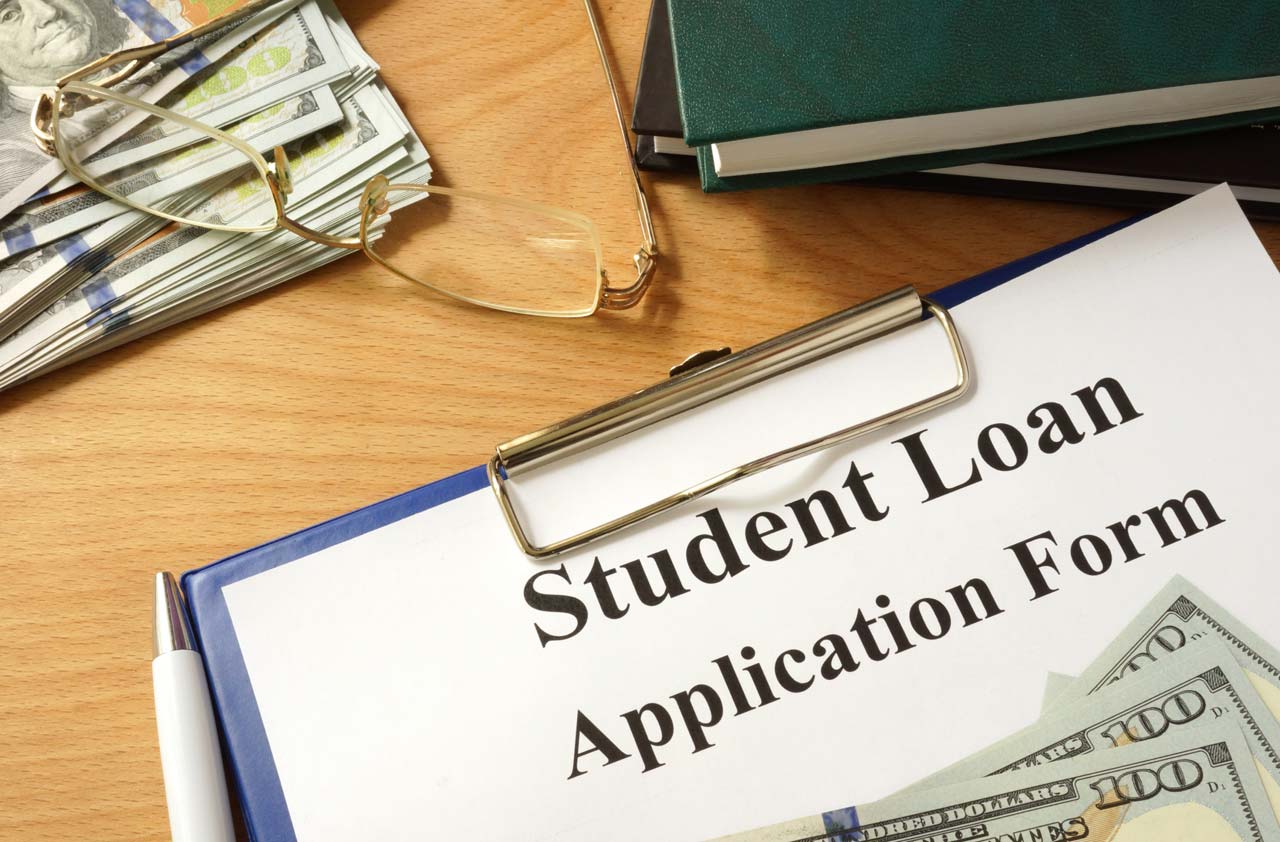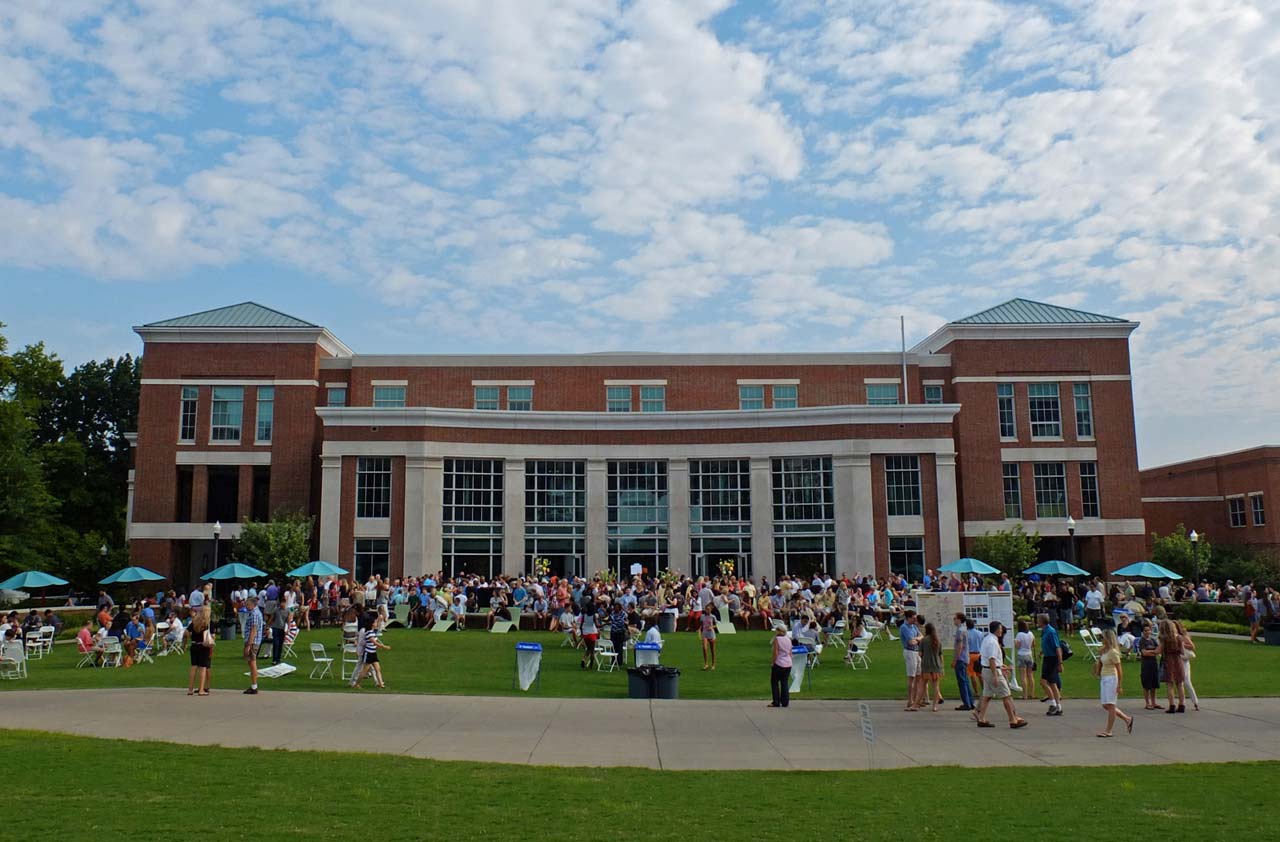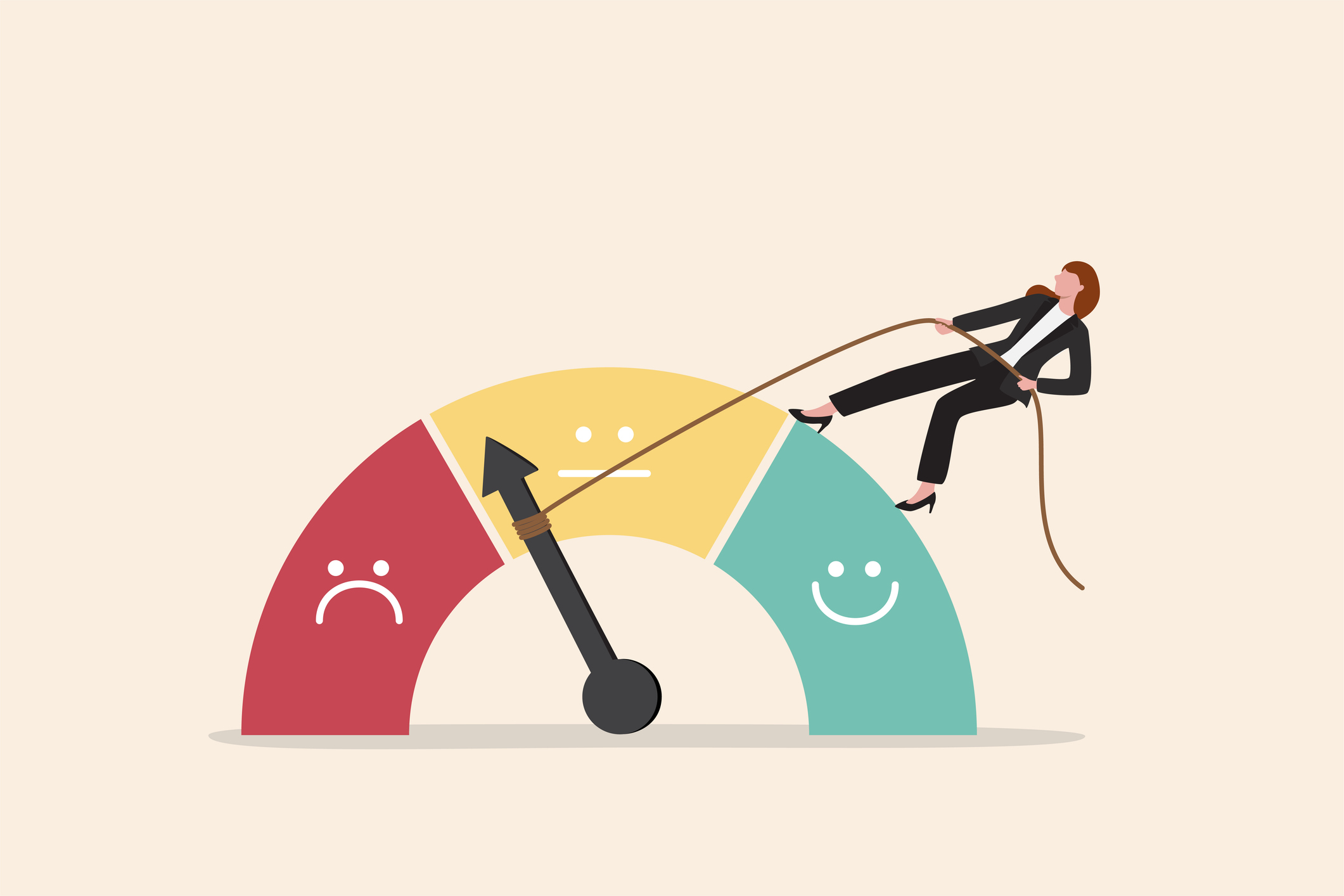10 Great Colleges That Won't Make Students Take Loans
The schools on our list of best college values do a great job of reducing their sticker price through generous financial aid awards, limiting debt at graduation among students who do borrow to less than the national average.


The schools on our list of best college values do a great job of reducing their sticker price through generous financial aid awards, limiting debt at graduation among students who do borrow to less than the national average. But some schools go even further, by taking loans off the table when it comes to financial aid packages. After all, loans aren't so generous, they have to be repaid.
In recent years, about six dozen schools have adopted no-loan policies, whereby scholarships and grants replace loans in financial aid packages. Some colleges limit no-loan packages to students whose family income falls below specific levels (such as $60,000 a year). Others have eliminated loans for all students who are eligible for financial aid. The programs don’t necessarily eliminate loans altogether. Even at schools where borrowing isn't part of the deal, a student’s financial aid package is based on what the school estimates a student's family can afford to pay. Some families can't or choose not to pay the full amount, which means students may have to borrow to make up the difference. And some students borrow to cover expenses that aren’t included in the budget covered by their financial aid package or to avoid having to take an on-campus or summer job.
The 10 schools on this list earned top marks in our combined 2016 rankings (which include private liberal arts colleges and private universities as well as public colleges). All 10 exclude loans from all financial aid packages, regardless of family income.

Princeton University
- Location: Princeton, N.J.
- Total annual cost: $58,660
- Avg. need-based aid: $42,097
- Total net cost: $16,563
- Kiplinger's combined rank: #2
- Students with loans: 17%
- SEE ALSO: 10 Best College Values, 2016
In 2001, Princeton became the first school to institute a no-loan financial aid policy, awarding all accepted students 100% of their demonstrated financial need in the form of scholarships and grants. About one in five families at Princeton do borrow on their own, but the average debt at graduation among students who borrow is less than one-fourth of the national average for private school students and the second-lowest, after Berea College, of all 300 schools in our rankings.
Outstanding academics, combined with generous financial aid, secure Princeton's second-place finish on our combined list (it also nabs the top spot on our list of private universities for the second time in a row). Princeton accepts only 7% of students and boasts a slim six-to-one student-faculty ratio. The average need-based aid award of more than $42,000 cuts the school's annual sticker price by more than 70%.

Harvard University
- Location: Cambridge, Mass.
- Total annual cost: $61,659
- Avg. need-based aid: $44,430
- Total net cost: $17,229
- Kiplinger's combined rank: #3
- Students with loans: 26%
The country's oldest institution of higher learning has been awarding financial aid to students since shortly after its 1636 founding. In 2007, Harvard sweetened the deal by taking loans off the table and replacing them with grants. But competition for admission to this Ivy League institution is fierce. Harvard's 6% admission rate ties with Yale's as the second-most competitive of all 300 schools in our rankings. Harvard also boasts some of the highest test scores in our combined top 10; 79% of students score 700 or higher on the critical-reading portion of the SAT, and 81% score top marks on the math portion.
Families of admitted students won't have to drain the coffers to cover their portion of the bill. The school generally expects families with an annual income of between $65,000 and $150,000 to contribute no more than 10% of their income. The school meets 100% of students' demonstrated financial need and awards need-based aid to 60% of students. The average need-based aid award cuts the school’s annual sticker price by 72%, making a Harvard education surprisingly affordable. About three-fourths of families avoid borrowing — and the average debt at graduation for students who do borrow is about half of the national average for private school students.

Davidson College
- Location: Davidson, N.C.
- Total annual cost: $61,119
- Avg. need-based aid: $37,170
- Total net cost: $23,949
- Kiplinger's combined rank: #4
- Students with loans: 29%
- SEE ALSO: 11 Top Sources of College Scholarships
Strong academics help Davidson College, located about 20 miles north of Charlotte, N.C., excel in our rankings. But the school also stands out for what it doesn't do: saddle students with financial aid that has to be repaid. In 2007, Davidson became the first liberal arts college to eliminate loans from all financial aid packages.
While Davidson's endowment is considerably smaller than that of the Ivy League schools with no-loan programs, the school meets 100% of each student's demonstrated financial need through scholarships, grants and campus jobs. Nearly half of Davidson students receive need-based financial aid, and the average award for students who qualify cuts the school's sticker price by 61%. Nearly 30% of students do take loans, but the average debt at graduation among those who borrow is about $8,000 less than the national average for students who attend private colleges.

Swarthmore College
- Location: Swarthmore, Pa.
- Total annual cost: $62,690
- Avg. need-based aid: $40,314
- Total net cost: $22,376
- Kiplinger's combined rank: #5
- Students with loans: 33%
Swarthmore's 425-acre campus, located just 11 miles southwest of Philadelphia, attracts stellar students. The school accepts just 17% of applicants; 64% of incoming freshmen score 700 or higher on the critical-reading portion of the SAT, and 68% score top marks on the math section. The small liberal arts college's generous, no-loan financial aid awards reduce the cost of attendance for those who qualify to about one-third of the sticker price, on average. The average debt of students who do borrow is about 30% less than the national average for students who attend private colleges.
This 152-year-old school offers more than 600 courses in more than 40 areas of study, ranging from ancient history and medieval studies to public policy and theater. Students can also select additional courses offered through an agreement with nearby Bryn Mawr and Haverford colleges (#86 and #26 respectively on our combined list) as well as the University of Pennsylvania (#33).

Vanderbilt University
- Location: Nashville, Tenn.
- Total annual cost: $61,470
- Avg. need-based aid: $39,953
- Total net cost: $21,517
- Kiplinger's combined rank: #6
- Students with loans: 24%
- SEE ALSO: 10 Best Colleges With the Lowest Average Graduating Debt
Vanderbilt University, located on 330 acres of parklike campus a mile and a half southwest of downtown Nashville, racks up points in our rankings for its strong academics. The school's competitive 13% admission rate, high test scores among incoming freshmen (90% score 30 or higher on the ACT) and eight-to-one student-faculty ratio, which generally leads to small class sizes, help the school break into our top 10.
Vanderbilt eliminated loans from students' financial aid packages in 2009. The school's $4.1 billion endowment helps Vanderbilt meet 100% of students' demonstrated financial need while keeping loans off of the table. Nearly half of students qualify for need-based aid, and the average award of nearly $40,000 slashes 65% off the school's annual sticker price. Vandy also awards non-need-based aid to 20% of students who don't receive need-based financial aid. The average debt at graduation among the roughly one-fourth of students who do borrow is $20,790.

Pomona College
- Location: Claremont, Calif.
- Total annual cost: $63,670
- Avg. need-based aid: $41,443
- Total net cost: $22,227
- Kiplinger's combined rank: #8
- Students with loans: 34%
This small liberal arts college in southern California makes the top 10 of our combined rankings for its stellar academics — including a competitive 12% admission rate and strong test scores among incoming freshmen (73% score 700 or higher on the critical-reading portion of the SAT, and 75% score top marks on the math portion) — and generous financial aid awards, which do not include loans. The average need-based aid award, more than $40,000, cuts the school’s annual sticker price by 65%. About one-third of students borrow, but the average debt at graduation of $16,273 is just over half the national average among private-school borrowers.
Pomona's idyllic campus, located within an hour's drive of Los Angeles, the mountains, the desert and beaches, attracts students from around the country for its broad liberal arts curriculum. Students can select from about 600 classes (or nearly 2,000 through Pomona's partnership with other colleges in the Claremont consortium) in 47 majors in the arts, humanities, social sciences and natural sciences. The school's 90% four-year graduation rate – one of the highest on our list of 300 colleges – keeps most families from having to fork out for an extra year.

Yale University
- Location: New Haven, Conn.
- Total annual cost: $63,250
- Avg. need-based aid: $45,710
- Total net cost: $17,540
- Kiplinger's combined rank: #9
- Students with loans: 16%
- SEE ALSO: 10 Great Colleges Where Alumni Earn the Most
Yale's top-notch academics and generous financial aid programs help this Ivy secure its spot in the top 10 of our best college values list. The school's $25.6 billion endowment allows the school to meet 100% of financial aid for students who qualify, without including loans in financial aid packages. And Yale's definition of financial need is broader than you might expect. Families with an annual income of $200,000 or more may still qualify for some financial help. Half of students receive need-based aid – the only kind that Yale offers – and the average award cuts the school’s annual sticker price by 72%.
The trick, however, is getting in. The school's 6% acceptance rate is among the most competitive of all of the schools in our rankings. Nearly 80% of incoming freshmen score 700 or higher on the critical-reading and math portions of the SAT. And 70% of students who are offered admission enroll. Once on campus, Yalies can choose from among roughly 2,000 courses each year in more than 145 academic departments and programs.

Amherst College
- Location: Amherst, Mass.
- Total annual cost: $64,772
- Avg. need-based aid: $47,243
- Total net cost: $17,529
- Kiplinger's combined rank: #20
- Students with loans: 31%
Located on 1,000 acres in the heart of Massachusetts's Pioneer Valley, Amherst College attracts top students. About two-thirds of incoming freshmen score 700 or higher on the critical-reading portion of the SAT, and 69% score top marks on the math section. The school's 14% admission rate ties with Harvey Mudd College as the fourth-most competitive among liberal arts colleges on our list. Students can choose from more than 850 courses on campus or more than 6,000 offered through Amherst's partnership with Hampshire College, Mount Holyoke College (#66 on our combined list), Smith College (#43) and the University of Massachusetts Amherst (#209).
Amherst eliminated loans from students' financial aid packages in 2008, replacing them with scholarships and grants. Last year, the school awarded nearly $50 million in financial aid to about 60% of its students. The average need-based aid award of more than $47,000 cuts the school's annual sticker price by 73%. Fewer than one-third of students borrow, and the average debt at graduation among those who do borrow is $14,490, less than half of the national average for private school students.

Stanford University
- Location: Stanford, Calif.
- Total annual cost: $61,852
- Avg. need-based aid: $41,620
- Total net cost: $20,232
- Kiplinger's combined rank: #21
- Students with loans: 23%
- SEE ALSO: 10 Great Colleges Where Your Kid Can Graduate in 4 Year or Less
This research university offers generous financial aid awards, which make a Stanford education surprisingly affordable. But slackers need not apply. Stanford's 5% admission rate is the most competitive of all 300 schools on our best values list. The school meets 100% of each student's demonstrated financial need without including loans in financial aid packages. The school's average need-based aid award of more than $41,000 cuts the school's annual sticker price by 67%. The average debt among the roughly one-fourth of students who borrow on their own is $19,230 at graduation.
Stanford's sprawling 8,180-acre campus, located in the heart of Silicon Valley between San Francisco and San Jose, is home to about 7,000 undergraduate students. Students can choose from courses in seven academic colleges and major in subjects ranging from creative writing and education to engineering and statistics. The school's four-to-one student-faculty ratio is among the lowest on our list of 300 colleges, ensuring that students get plenty of face time with professors.

Bowdoin College
- Location: Brunswick, Maine
- Total annual cost: $62,190
- Avg. need-based aid: $38,978
- Total net cost: $23,212
- Kiplinger's combined rank: #28
- Students with loans: 32%
This small liberal arts college, tucked away between the mountains and the coast of Maine, a 25-minute drive northeast of Portland, is home to about 1,800 students. The school accepts 15% of applicants, and nearly half of those who are accepted choose to enroll. Generous need-based aid awards slash the school's annual sticker price by 63% for students who qualify. And students who attend Bowdoin, whose mascot is the polar bear, won't have to take the plunge when it comes to student loans. The school eliminated loans from its financial aid packages in 2008, replacing them with scholarships and grants.
Once on campus, students can choose from more than 40 majors, ranging from computer science and economics to environmental studies and neuroscience. When they're not in class, students can explore other interests through the more than 100 student groups and organizations. The school's nine-to-one student-faculty ratio means students regularly engage with their professors, 97% of whom have the highest degree in their field.
Get Kiplinger Today newsletter — free
Profit and prosper with the best of Kiplinger's advice on investing, taxes, retirement, personal finance and much more. Delivered daily. Enter your email in the box and click Sign Me Up.

-
 Fired Up By the Masters and RBC Heritage? See These Homes for Sale By Golf Courses
Fired Up By the Masters and RBC Heritage? See These Homes for Sale By Golf CoursesFive homes for sale near golf courses, for people who can't get enough of the tour.
By Alexandra Svokos
-
 The Economic Impact of the US-China Trade War
The Economic Impact of the US-China Trade WarThe Letter The US-China trade war will impact US consumers and business. The decoupling process could be messy.
By David Payne
-
 What to Do With Your Tax Refund: 6 Ways to Bring Growth
What to Do With Your Tax Refund: 6 Ways to Bring GrowthUse your 2024 tax refund to boost short-term or long-term financial goals by putting it in one of these six places.
By Rachael Green
-
 What Does Medicare Not Cover? Eight Things You Should Know
What Does Medicare Not Cover? Eight Things You Should KnowHealthy Living on a Budget Medicare Part A and Part B leave gaps in your healthcare coverage. But Medicare Advantage has problems, too.
By Donna LeValley
-
 15 Reasons You'll Regret an RV in Retirement
15 Reasons You'll Regret an RV in RetirementMaking Your Money Last Here's why you might regret an RV in retirement. RV-savvy retirees talk about the downsides of spending retirement in a motorhome, travel trailer, fifth wheel or other recreational vehicle.
By Bob Niedt
-
 The Six Best Places to Retire in New England
The Six Best Places to Retire in New Englandplaces to live Thinking about a move to New England for retirement? Here are the best places to land for quality of life, affordability and other criteria.
By Stacy Rapacon
-
 The 10 Cheapest Countries to Visit
The 10 Cheapest Countries to VisitWe find the 10 cheapest countries to visit around the world. Forget inflation woes, and set your sights on your next vacation.
By Quincy Williamson
-
 15 Ways to Prepare Your Home for Winter
15 Ways to Prepare Your Home for Winterhome There are many ways to prepare your home for winter, which will help keep you safe and warm and save on housing and utility costs.
By Donna LeValley
-
 Six Steps to Get Lower Car Insurance Rates
Six Steps to Get Lower Car Insurance Ratesinsurance Shopping around for auto insurance may not be your idea of fun, but comparing prices for a new policy every few years — or even more often — can pay off big.
By Donna LeValley
-
 How to Increase Credit Scores — Fast
How to Increase Credit Scores — FastHow to increase credit scores quickly, starting with paying down your credit card debt.
By Lisa Gerstner
